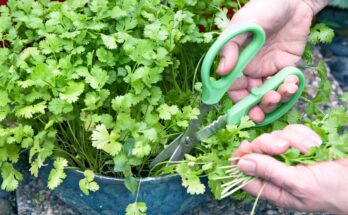You’ve probably walked past it, pulled it off your clothes, or mistaken it for a weed. Goose grass—also known as cleavers or Galium aparine—is that sticky, trailing plant that clings to everything in sight. But while it may seem like an unwanted garden pest, goose grass has a long and rich history as a natural remedy.
Used in traditional medicine for centuries, this wild-growing herb is now gaining attention in modern wellness circles for its gentle detoxifying effects, immune-boosting properties, and ability to support skin, kidneys, and the lymphatic system. So, what makes goose grass such a hidden gem?
The Forgotten Role of Wild Herbs
Goose grass thrives in nature’s corners—fence lines, hedgerows, woodlands—yet its benefits are anything but marginal. Herbalists consider it a springtime staple: a mild, cooling herb ideal for flushing out toxins and reawakening the body after months of stagnation.
But goose grass isn’t just for detox teas and tinctures. It’s a versatile plant that can be made into poultices, infusions, skin washes, and even smoothies. Let’s explore its key health benefits and how to use it safely.
The Health Benefits of Goose Grass
1. Lymphatic System Support
Goose grass has a natural affinity for the lymphatic system, helping to stimulate lymph flow and reduce congestion. This makes it especially helpful for swollen glands, sluggish immunity, or anyone doing a seasonal cleanse.
2. Kidney and Urinary Tract Cleanser
Mildly diuretic, goose grass encourages urine production, aiding in kidney filtration and flushing out waste. This can be beneficial for those prone to urinary tract infections or water retention.
3. Skin Health and Detoxification
Used internally or topically, goose grass has been shown to reduce skin inflammation, soothe irritation, and even assist in the healing of eczema or acne. Its detoxifying effect is thought to contribute to clearer, healthier skin over time.
4. Liver Function Support
Some herbalists recommend goose grass as a liver ally, particularly when made into an infusion. It helps encourage bile flow and supports the liver’s role in metabolizing toxins.
5. Gentle Weight Loss Aid
Because of its cleansing and diuretic properties, goose grass is sometimes included in herbal blends designed to reduce bloating and water retention. It’s not a miracle fat-burner, but it may help your body feel lighter and more balanced during a cleanse.
How to Use Goose Grass Safely
You can harvest goose grass yourself (it grows wild in many temperate regions), or buy it dried from herbal apothecaries. It’s best used fresh when possible, as the active compounds degrade quickly once dried.
Popular preparations include:
-
Goose Grass Tea: Steep a handful of fresh goose grass in boiling water for 10–15 minutes.
-
Infused Water: Soak the plant overnight in cool water for a gentle detox drink.
-
Poultice: Mash fresh goose grass and apply directly to irritated skin.
-
Smoothies: Add small amounts to green smoothies—just make sure it’s pesticide-free and washed thoroughly.
Precautions
Goose grass is considered safe for most people, but because of its diuretic effect, those with kidney issues or on certain medications should consult a healthcare provider first. It’s not recommended for pregnant or breastfeeding individuals without professional guidance.



